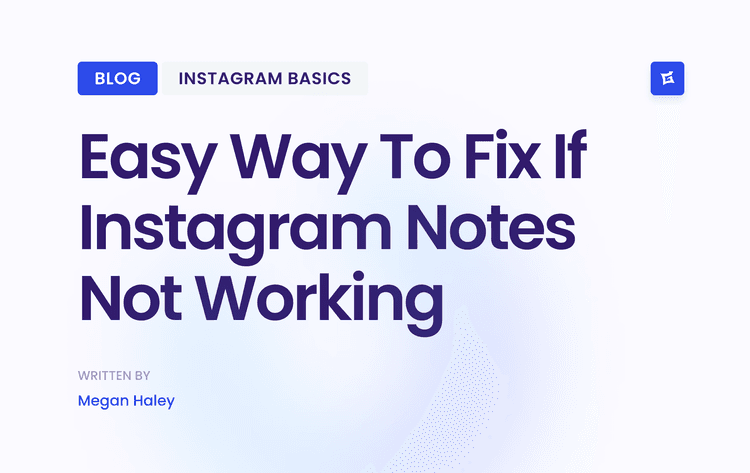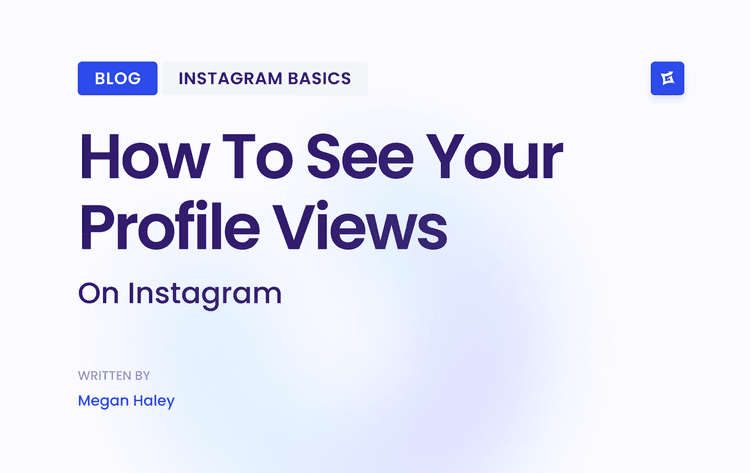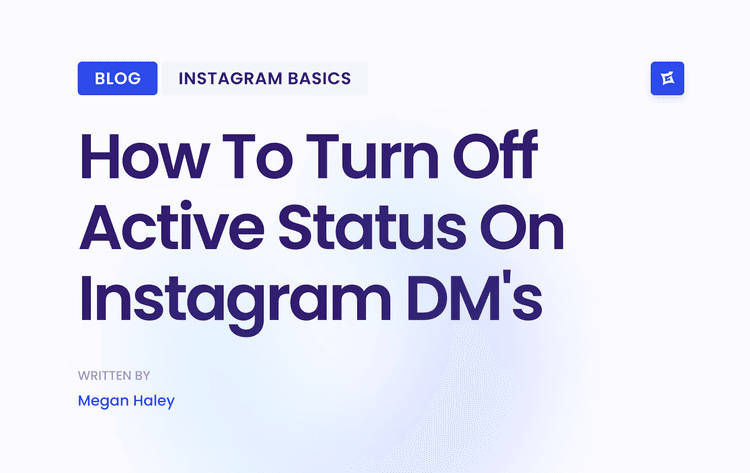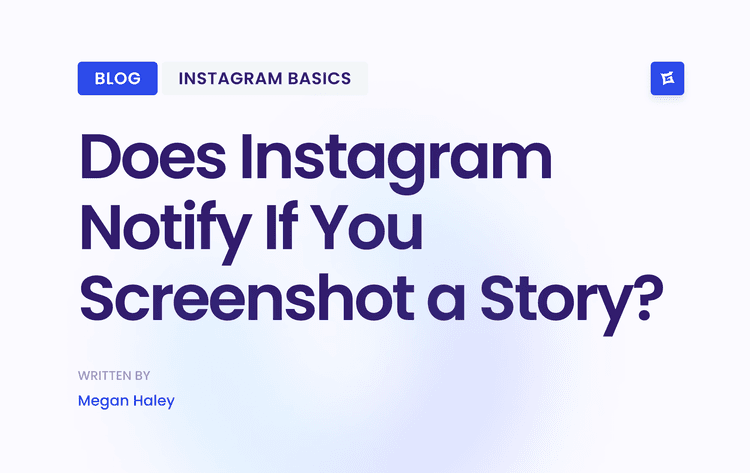What Is Content Repurposing?
Think of it like a Hollywood blockbuster. A hit movie doesn't just stay in the theater. It gets repackaged as a DVD/Blu-ray with bonus features, its soundtrack is sold separately, it might become a video game, and the best lines turn into merchandise. It’s all the same core story, just presented in new ways for different fans.
That’s exactly what we’re doing with our content. A single in-depth webinar you spent weeks preparing is your "blockbuster." From that one piece, you can spin off a whole universe of content:
Detailed Blog Posts: Each key talking point from the webinar can be expanded into its standalone article.
Quick Social Media Clips: Pull out the most powerful 60-second insights for platforms like Instagram Reels or TikTok.
Shareable Quote Graphics: Turn memorable stats or quotes into eye-catching images for LinkedIn and X (formerly Twitter).
An Email Drip Campaign: Break down the core lessons into a 5-day educational series for your email list.
The goal is to work smarter, not harder, by making your best content do the heavy lifting for you across multiple channels.
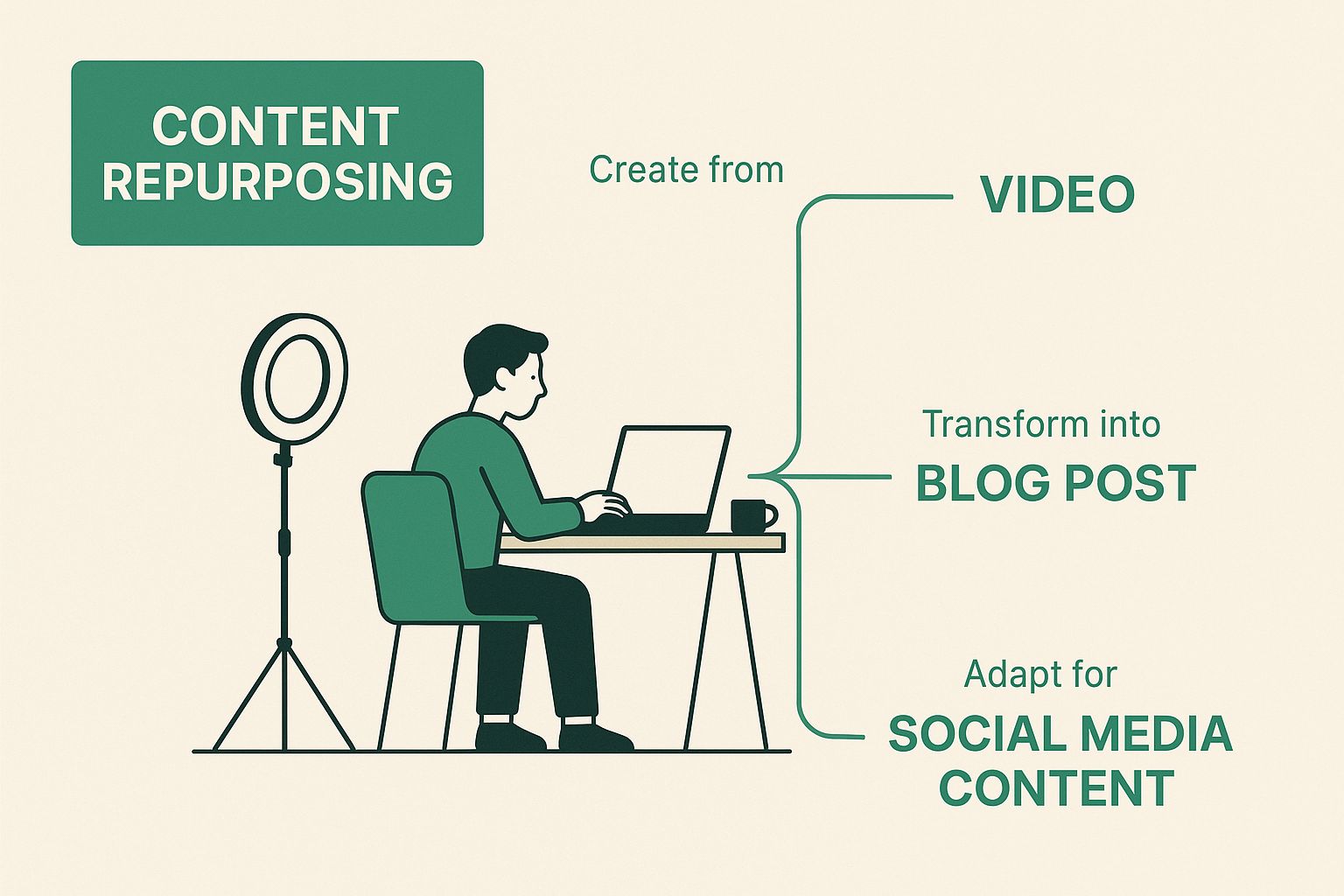
As you can see, this isn't about copy-pasting. It’s about thoughtfully reformatting your message to fit the unique expectations and consumption habits of each platform’s audience.
The Guiding Philosophy
The whole idea behind repurposing is to get the absolute maximum value out of the hard work you’ve already put in. You've done the research and created something great; now it's time to make sure it reaches everyone it possibly can.
To get a better handle on this, check out these powerful content repurposing strategies that show you how to expand your reach without burning out.
From Pillar Content to Repurposed Assets
Let's look at a concrete example. See how a single webinar can be changed into multiple content pieces to maximize reach.
A 1-hour webinar can be repurposed into multiple content formats for different platforms. It can be changed into a 1,500-word blog post and published on a company blog or Medium. The same webinar can also be condensed into a 5-minute highlight video for platforms like YouTube and LinkedIn.
Additionally, it can be broken down into three 60-second clips to share on Instagram Reels or TikTok. Another option is to create ten quote graphics for X (Twitter) or Instagram. The content can further be repurposed into a 5-part email course for newsletters or turned into an infographic or checklist suitable for Pinterest and blogs.
This illustrates just how many different assets you can create from a single, solid piece of content, ensuring your message connects with people no matter where they hang out online.
Why Repurposing Is a Strategic Advantage
Let's get one thing straight: content repurposing isn't just about saving a bit of time. It’s a core component of any smart marketing plan today. It’s about ditching the old "one-and-done" content cycle for a much more powerful "create once, distribute forever" philosophy.
Think of it this way: every piece of content you create becomes a hard-working asset. It’s not just about being efficient; it's about ensuring your best work is seen by the most people, in the way they want to see it.
Someone killing time on Instagram Reels wants a quick, punchy video. A professional browsing LinkedIn, on the other hand, might be more interested in a detailed infographic or a thoughtful text post. Repurposing allows you to serve both of them without having to reinvent the wheel every time.
Amplifying Your Message and ROI
The real magic happens when you extend the reach and lifespan of your best ideas. One deeply researched blog post can become the fuel for your social media feed, your email newsletter, and even your video content for weeks or months to come.
This isn’t just a nice idea—it’s how the best in the business operate. A staggering 94% of marketers are already repurposing content to tailor their message for different channels. Why? Because it drives better engagement, brings in higher-quality leads, and ultimately boosts conversions. You can dig into the numbers in this study on content repurposing statistics on ukti.co.in.
This is a really important distinction to make.
> Repurposing isn't a shortcut for creating less content. It's a strategic framework for getting more value out of the high-quality content you already have.
When you do this, you reinforce your brand’s core message across countless touchpoints. This consistent presence builds genuine authority and keeps your brand at the front of people’s minds, which is a key part of any solid content marketing strategy.
Ultimately, you get a much bigger return on the time and money you initially invested, turning a single effort into a ripple effect of positive results.
The Real Economic Impact of Repurposing Content
Let's be honest: creating great content is a serious investment. It takes time, money, and a lot of brainpower. When you pour hours or even weeks into a single, killer piece of content, letting it sit there after its initial launch is a massive waste. Think of it like building a factory and only running it for one day. The real payoff comes from keeping it productive.
This is where the economics of content repurposing shine. It’s a direct answer to the rising costs of content creation. It now takes 65% more time to produce a single high-quality blog post than it did just four years ago. Repurposing lets you squeeze every drop of value out of that initial effort, turning one asset into an army of content that works for you around the clock. You can see more stats on how businesses are winning with this strategy in this breakdown from transcribetube.com.
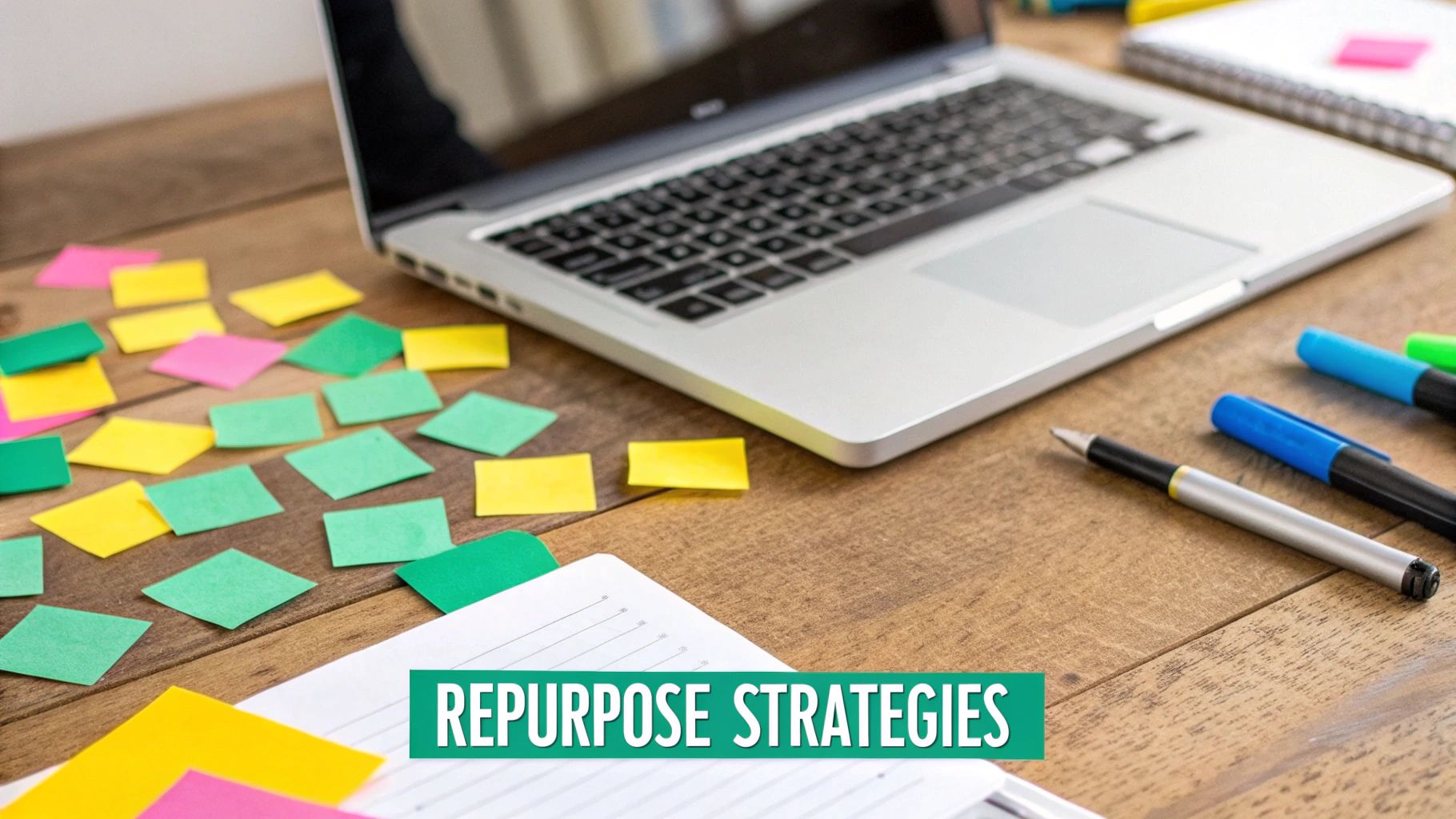
Driving a Higher Return on Investment
The impact on your budget is immediate and significant. Companies that get serious about blogging and repurposing their content are 13 times more likely to see a positive ROI. The reason is simple: you’re not just saving time, you’re creating more shots on goal—more chances to engage and convert—without starting from a blank page every single time.
This smart reuse of your best material boosts your marketing in a few critical ways:
Extends Content Lifespan: That awesome webinar you ran? It can be mined for social media clips, blog posts, and email newsletters for months, keeping your brand top-of-mind long after the live event.
Slashes Production Costs: Instead of brainstorming a new idea from scratch, you're building on proven material. This drastically cuts the cost for each new piece of content you publish.
Creates More Conversion Paths: With more content formats on more platforms, you meet potential customers wherever they hang out. This naturally leads to better conversion rates.
> When you repurpose, you're moving away from a constant, expensive content treadmill. You’re shifting to a smarter model of strategic amplification, where every dollar you invest works harder and goes further.
And we can't forget the SEO benefits. Every time you repurpose content, you create a new asset that can rank for your target keywords. It also gives you more opportunities to build a rock-solid internal linking structure, showing search engines that your site is an authority on the subject.
Actionable Ways to Repurpose Your Content
Alright, now that we've covered the "why," let's get into the "how." Content repurposing isn't just a lofty idea; it's a set of practical, repeatable steps you can take to turn one great piece of content into a dozen assets.
The secret is to stop thinking in terms of copy-pasting and start thinking about translating. You're taking a core message and adapting it to fit the language and expectations of a new platform and its audience.
For example, a deep-dive blog post is a fantastic starting point. It’s a content goldmine. You can pull out the most important stats and key takeaways to create a stunning infographic—perfect for sharing on Pinterest or embedding back into the original article. This makes dense information super easy to scan and share.
That same blog post could also easily become a full week's worth of social media updates. A meaty section can be spun into a thoughtful LinkedIn article, while a single surprising statistic can become a bold, graphic-based post for Instagram. It’s all about meeting people where they already are with content that feels natural to that space.
From Written Word to Dynamic Media
One of the biggest wins in content repurposing comes from turning static text into engaging audio or video. Your most popular blog posts are practically pre-written scripts for short, punchy YouTube videos or even a series of TikToks. This is a brilliant way to capture the attention of people who would much rather watch or listen than read.
Here are a few proven ways to make this happen:
Blog Post to Email Mini-Course: Take a massive "ultimate guide" and break it into a 5-day email course that helps you nurture new subscribers.
Webinar to Case Study: Did a customer share a huge win during a live webinar? That's a perfect story to flesh out into a detailed case study PDF for your sales team.
Customer Testimonials to Social Proof Graphics: Turn those awesome customer reviews into clean, shareable quote graphics. If you want to go a step further, you can leverage user-generated content to build even more powerful social proof.
> The real magic of repurposing is in adapting your core message, not just copy-pasting the text. A great video needs a totally different vibe and structure than a formal white paper, even when they’re about the exact same thing.
Expanding Your Content Universe
Repurposing isn't just about your channels. That internal report packed with original research? It’s the perfect foundation for a guest post on a major industry blog, which gets your expertise in front of a whole new set of eyes.
For a closer look at even more powerful methods, check out these effective content repurposing strategies.
Smart Content Repurposing Strategies
An in-depth blog post can be repurposed into a multi-part email course, with the primary goal of lead nurturing and education.
A live webinar can be transformed into short video clips for social media, helping to drive engagement and views.
Customer interviews can be adapted into a case study or success story, which works to build credibility and trust.
An internal data report can be redesigned into an industry-focused infographic, making it easier to increase shareability and reach.
Lastly, a podcast episode can be turned into a blog post with key takeaways, supporting SEO and audience expansion.
By consistently applying these techniques, you'll build a powerful content ecosystem where every piece you create works harder, supports the others, and dramatically boosts the return on your initial time and effort.
How AI Can Scale Your Repurposing Efforts
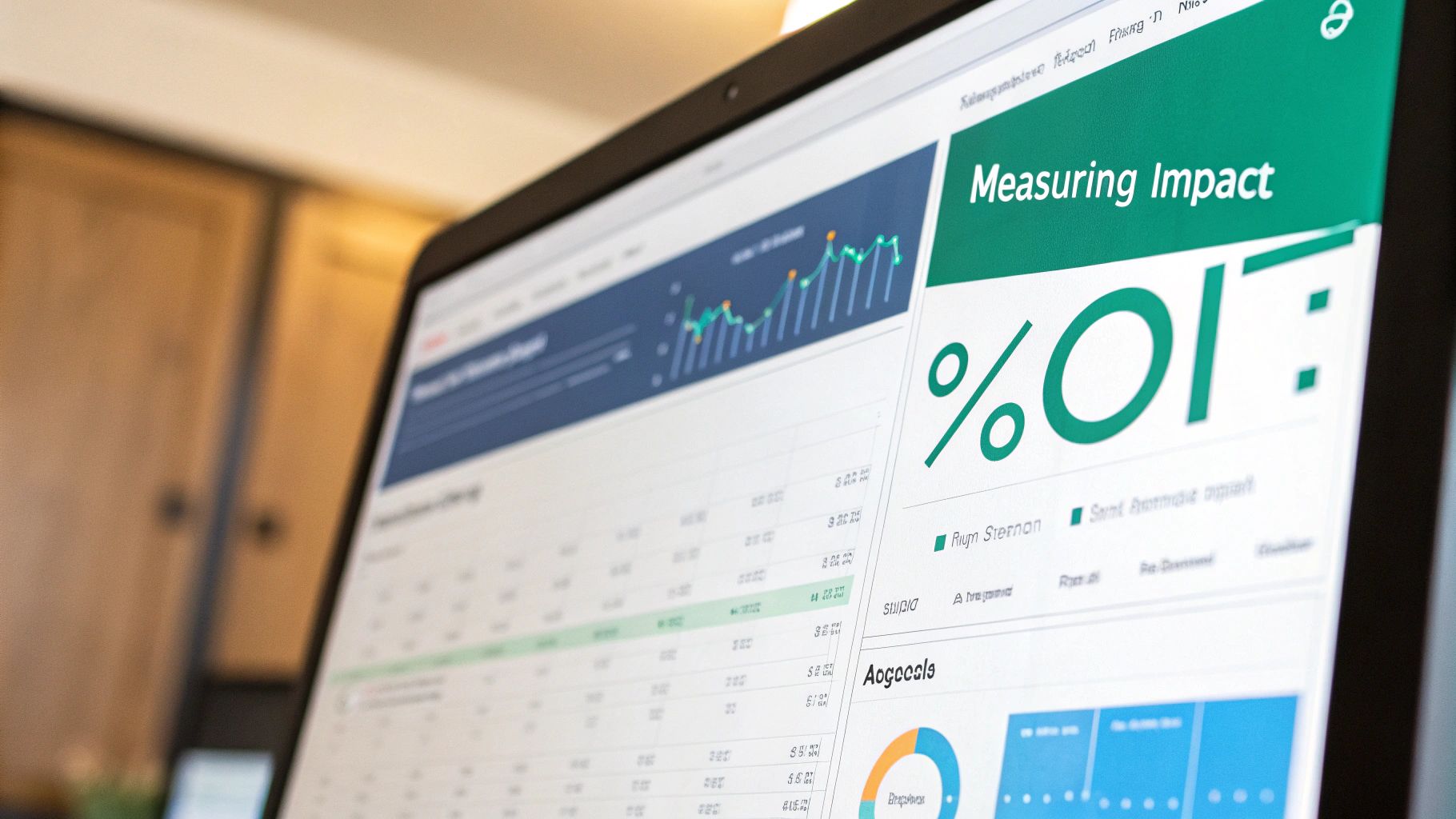
Let's be honest: repurposing content manually is a grind. It's a huge bottleneck, especially when you're trying to connect with audiences around the world. The old-school way of localizing content—translating it and adapting it for different cultures—is painfully slow and expensive. It’s a constant struggle to keep your brand's voice consistent from one market to the next.
This is where Artificial Intelligence completely flips the script. The latest AI tools can take over the most time-consuming parts of the job, transforming a tedious manual chore into a smooth, scalable operation.
> Think of AI as a force multiplier for your content team. It handles the heavy lifting—the translating, summarizing, and reformatting—so your human experts can focus on high-level strategy and adding those crucial cultural touches.
Picture this: you feed a single webinar script into an AI platform. In minutes, you get back ready-to-edit drafts for social media posts, blog articles, and email newsletters, all tailored for five different languages. This isn't science fiction anymore; it's what's possible today.
Automating for Global Reach
AI-powered tools are fundamentally changing how we create and adapt content. For instance, see how speech-to-text features are being built right into workflows when using AI for content creation with tools like ChatGPT.
This kind of technology is a game-changer for taking content global. Modern platforms can spit out repurposed content that is already 80-90% of the way there, dramatically cutting down the work needed from human reviewers.
This frees up your marketing team to push into new languages and cultural markets without sacrificing the consistency that makes your brand recognizable. By bringing AI into your repurposing strategy, you can hit a level of scale and speed that was just out of reach before, making sure your best ideas connect with people everywhere.
Answering Your Questions About Content Repurposing
Even when you’ve got the concept down, a few questions always seem to pop up before you dive in. It’s completely normal. Let's clear the air on some of the most common hurdles people face so you can get started with a solid plan.
First up, the big one: SEO. Everyone worries about getting penalized for duplicate content, and for good reason. But here’s the good news—repurposing, when done right, isn't duplication.
Search engines are sophisticated enough to know the difference between a blog post and a video script derived from it. Turning an article into an infographic, a podcast episode, or a series of tweets creates genuinely new pieces of content for different platforms and audiences. You’re not copying and pasting; you’re re-imagining.
How Do I Pick the Right Content to Repurpose?
Not everything in your content library is worth a second life. The trick is to be selective and strategic. You want to pour your energy into the pieces that are most likely to deliver a big return.
Focus your attention on two types of content: your proven winners and your timeless classics.
Your Greatest Hits: Dive into your analytics. Which articles, videos, or guides get the most traffic, shares, and comments? That’s your audience telling you exactly what they love.
Evergreen Content: Look for topics that aren't tied to a specific date or trend. A deep dive into a core industry concept will stay relevant for years, making it a perfect candidate for repurposing.
Data-Heavy Pieces: Anything loaded with stats, step-by-step instructions, or unique data points is gold. This type of content is incredibly easy to break down into infographics, quote cards, or quick-tip videos.
> The goal isn't to recycle everything. It's about giving your best content more chances to shine. By focusing on what's already working, you're taking a shortcut to results.
If you're a small team or flying solo, don't try to boil the ocean. You'll just burn out. Instead, start small. Pick a single high-performing blog post and turn it into just two or three new things—maybe a simple infographic and a handful of social media posts. This approach keeps things manageable and helps you build momentum.
Ready to grow your Instagram audience without the grind? Gainsty uses advanced AI and expert strategies to attract real, engaged followers. Start your organic growth journey with Gainsty today
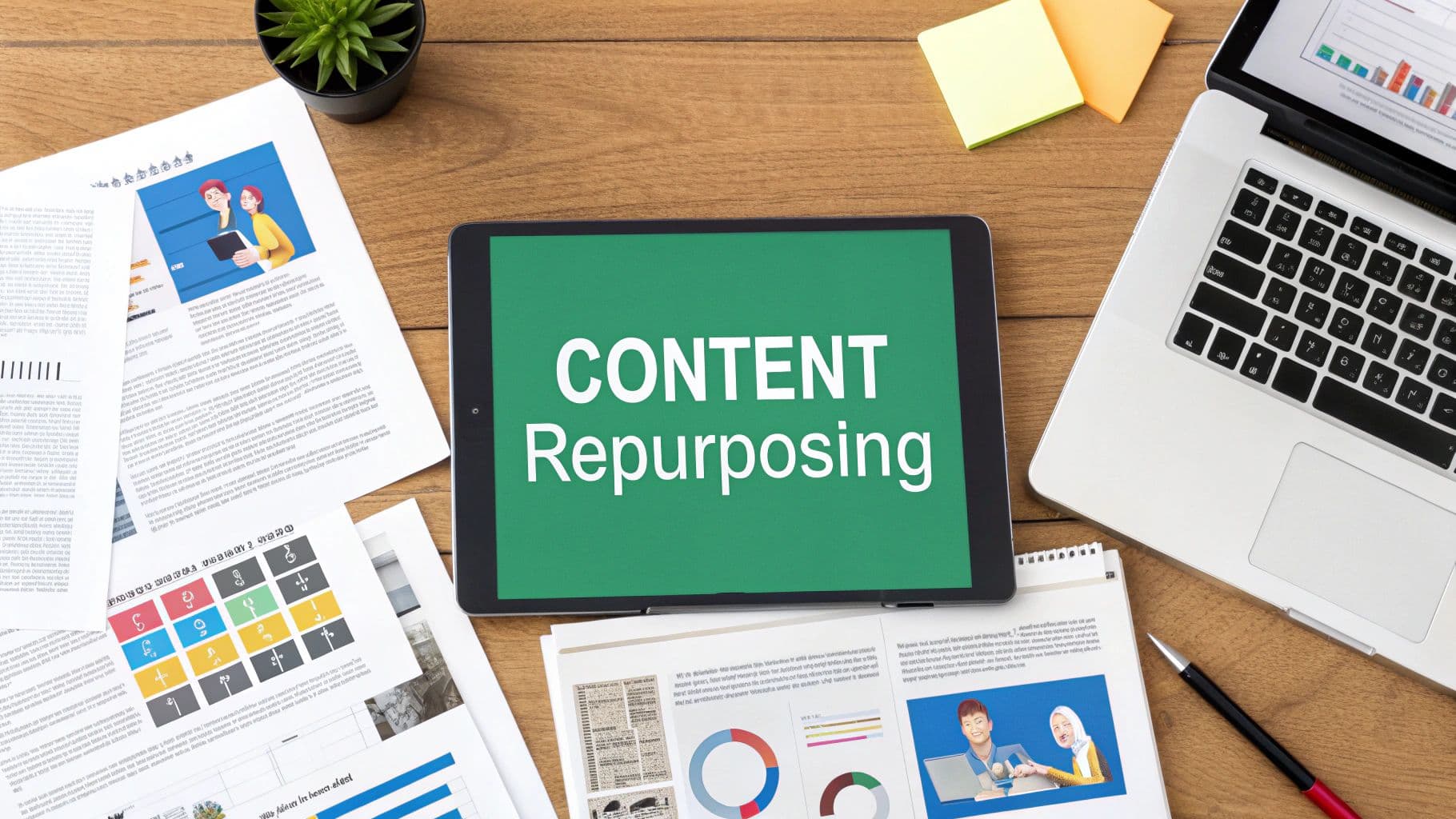
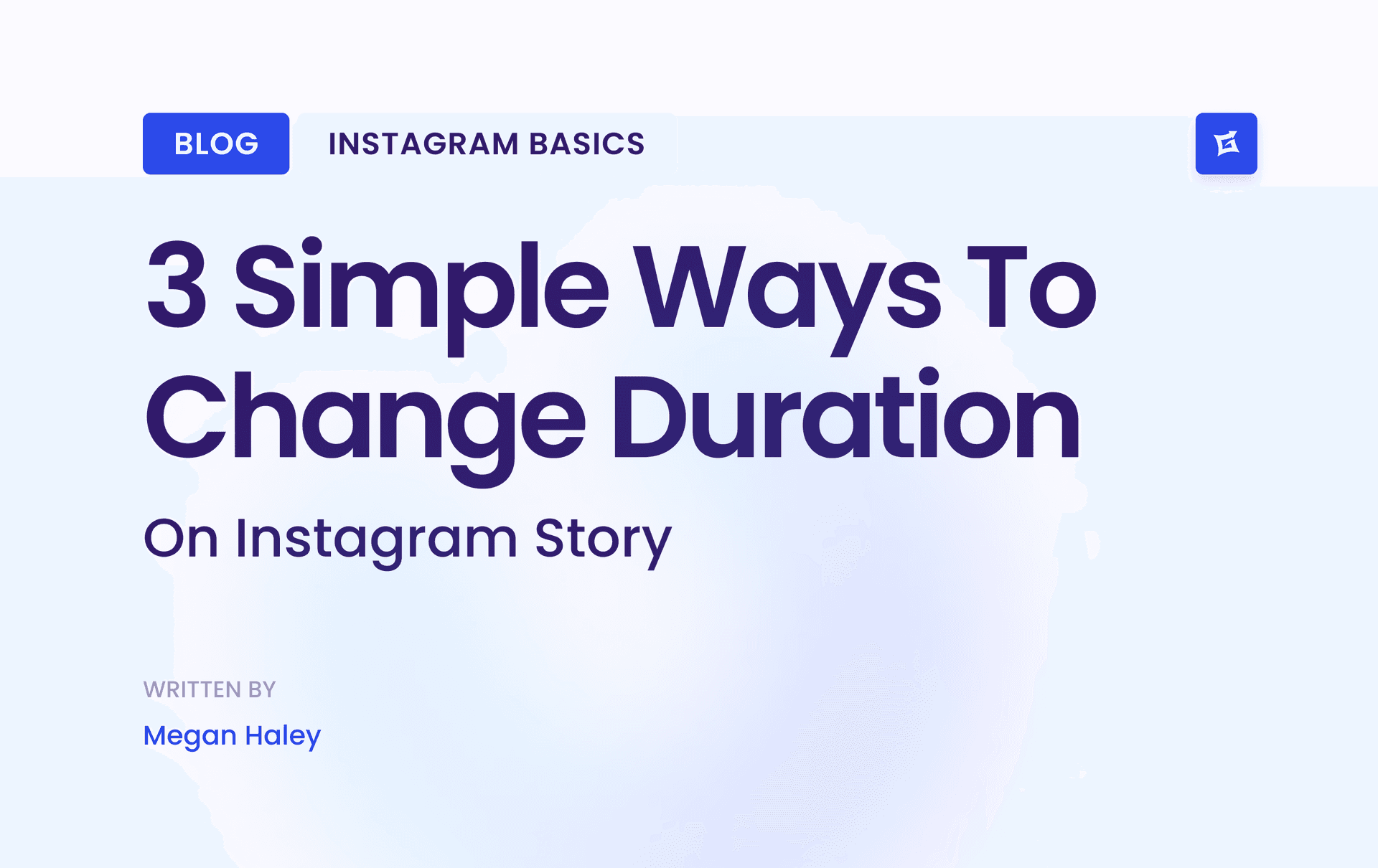
.png&w=1920&q=75&dpl=dpl_Byg4UCPHSaHbHVVtp2RwFp1gwKki)
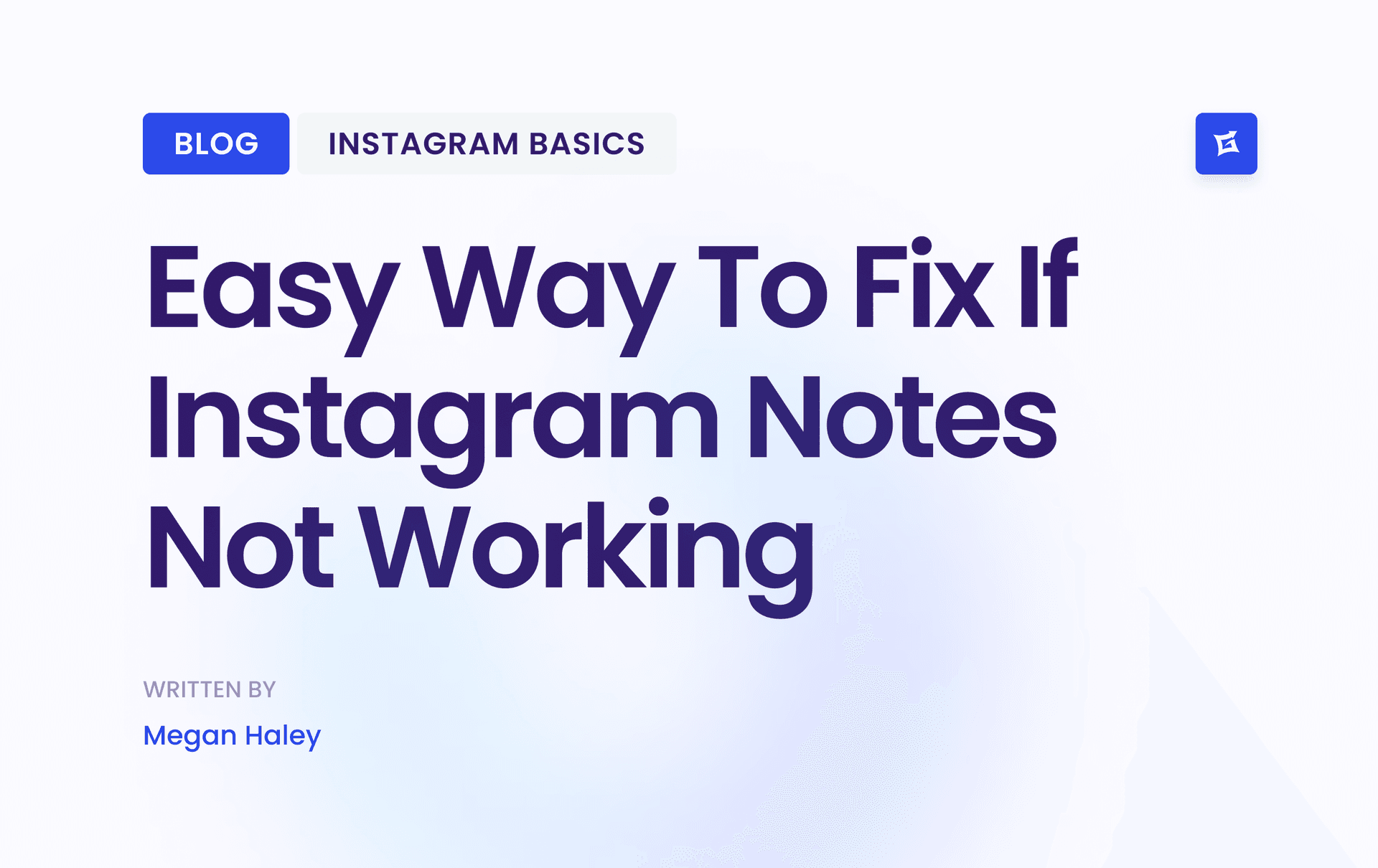
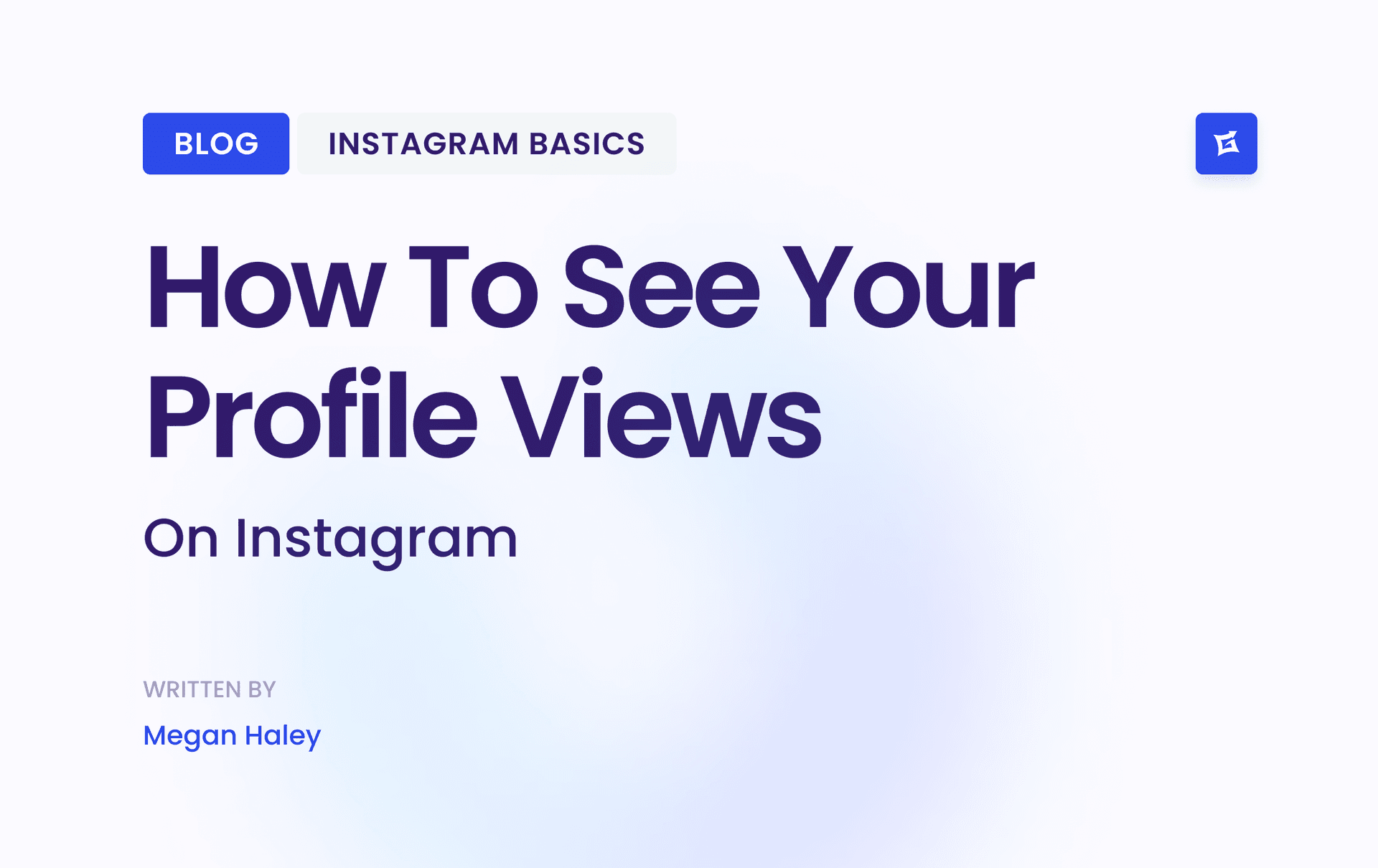
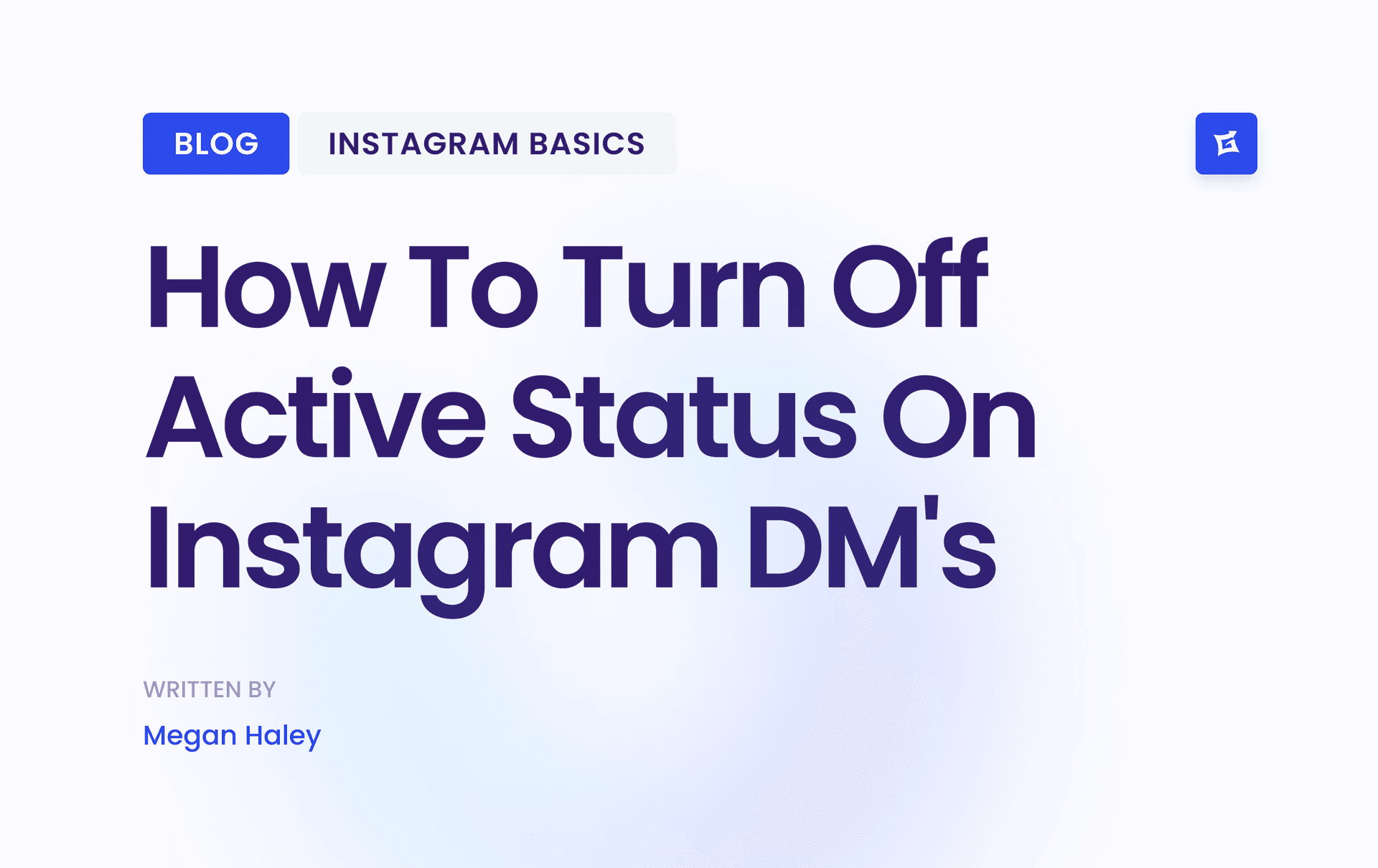
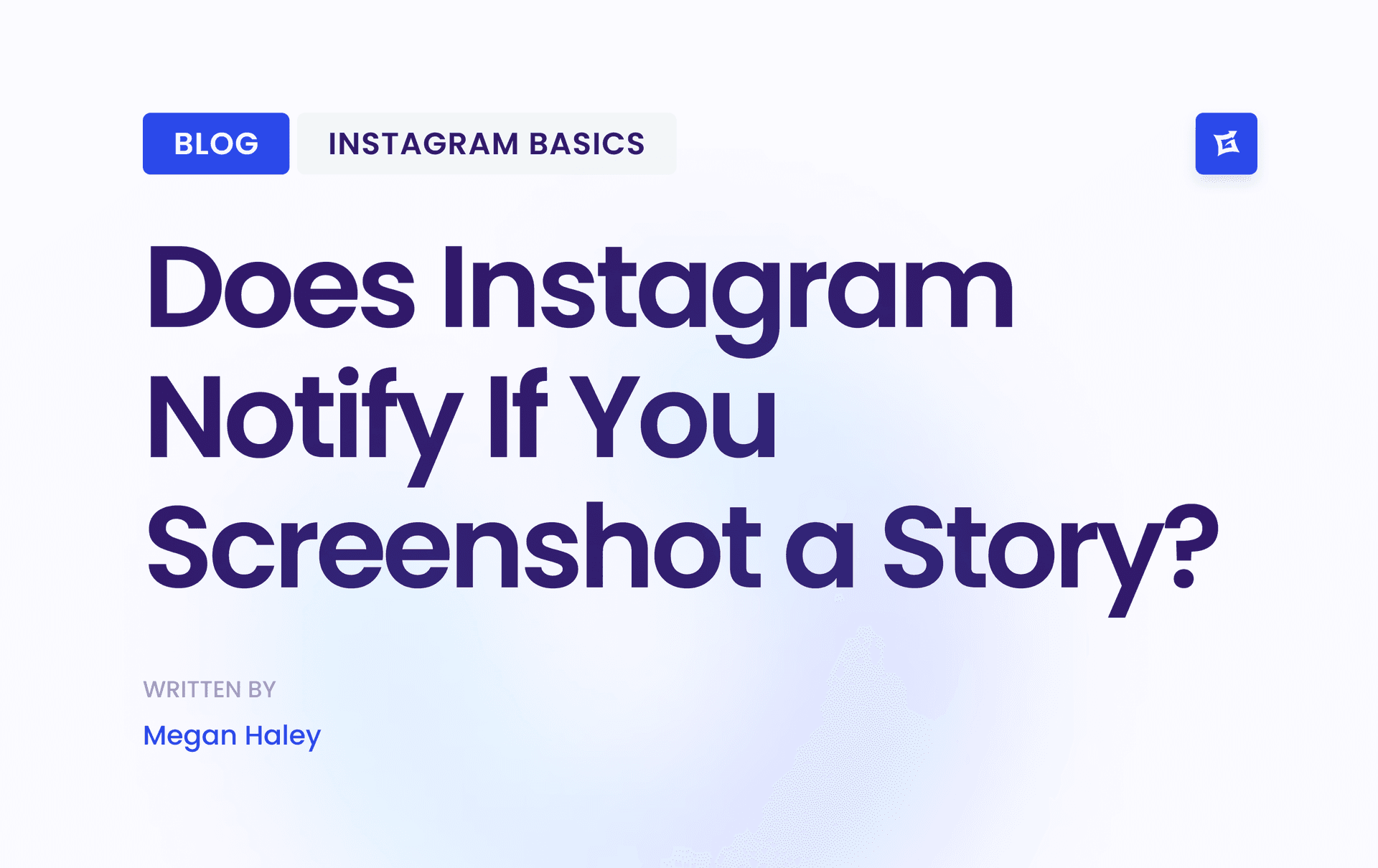



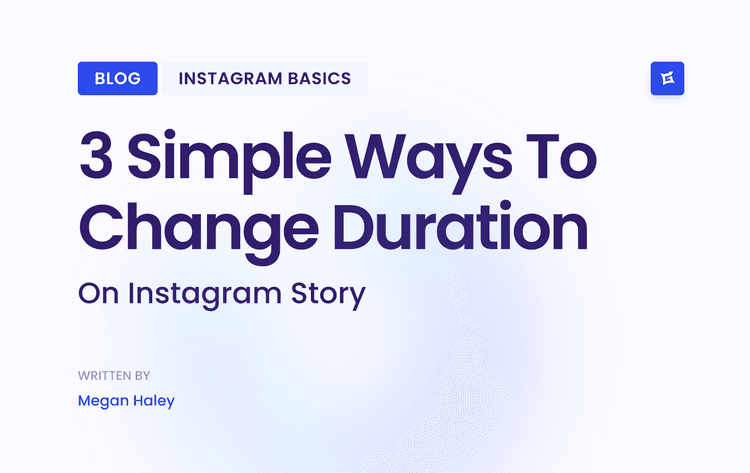
.png&w=750&q=75&dpl=dpl_Byg4UCPHSaHbHVVtp2RwFp1gwKki)
